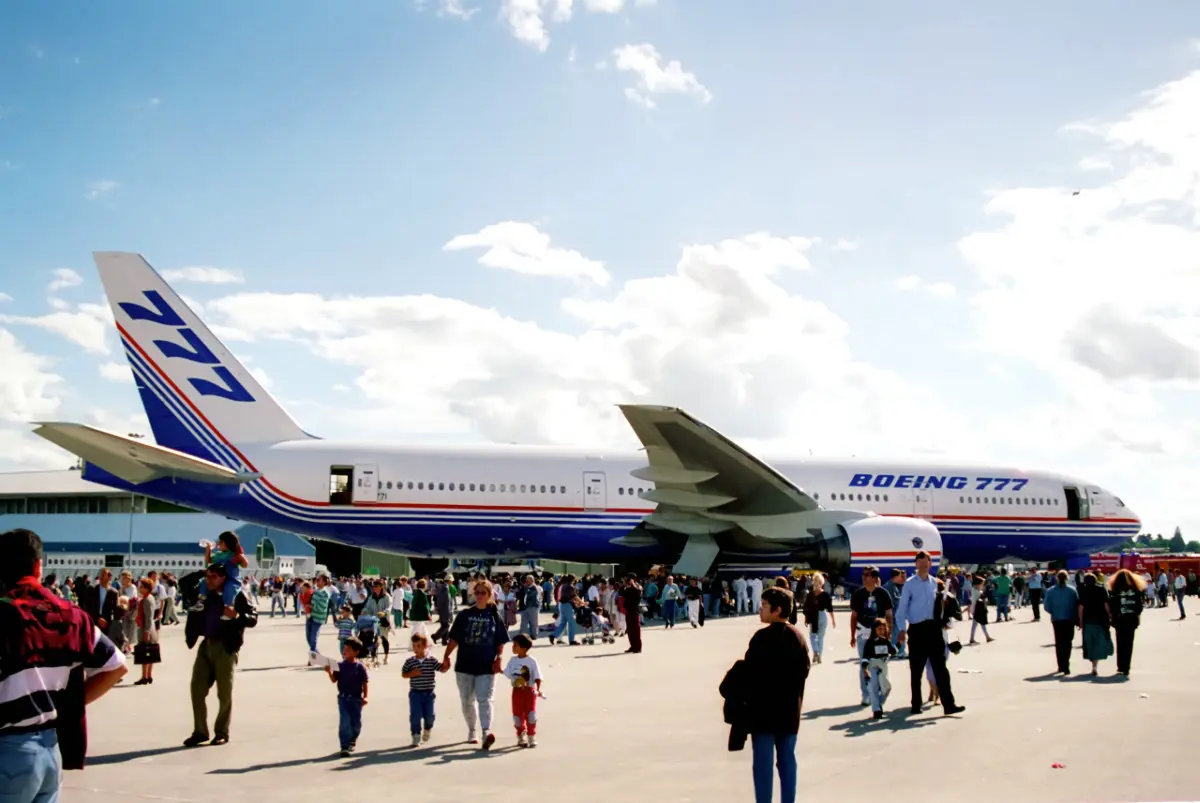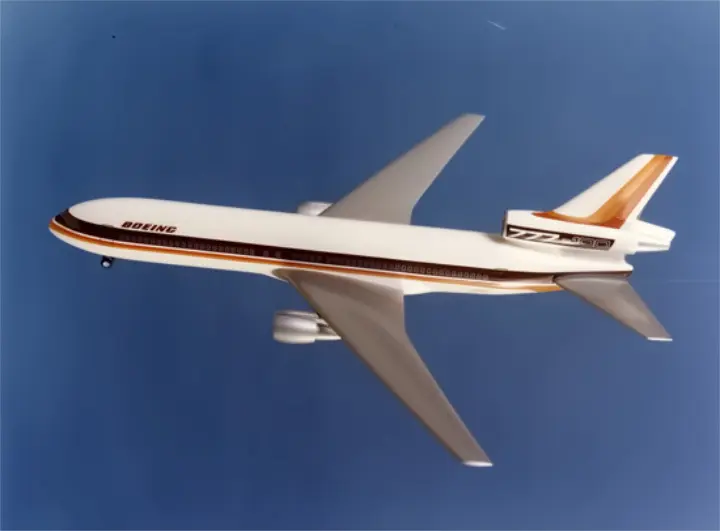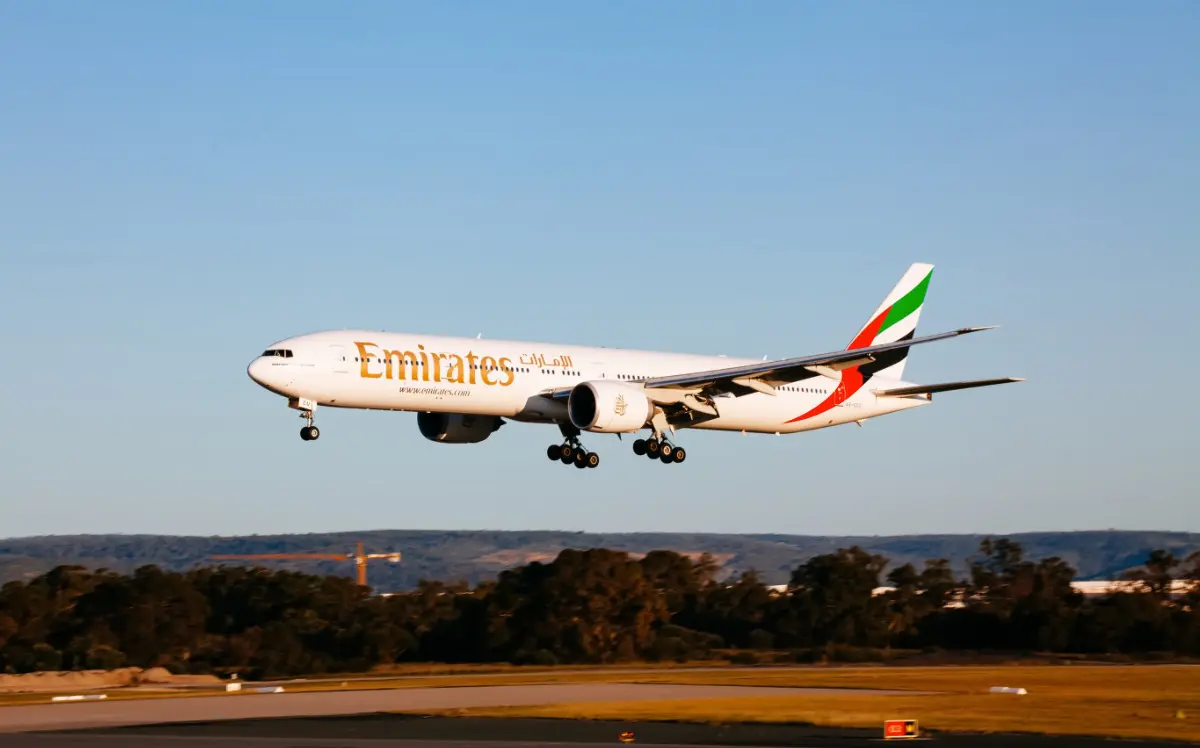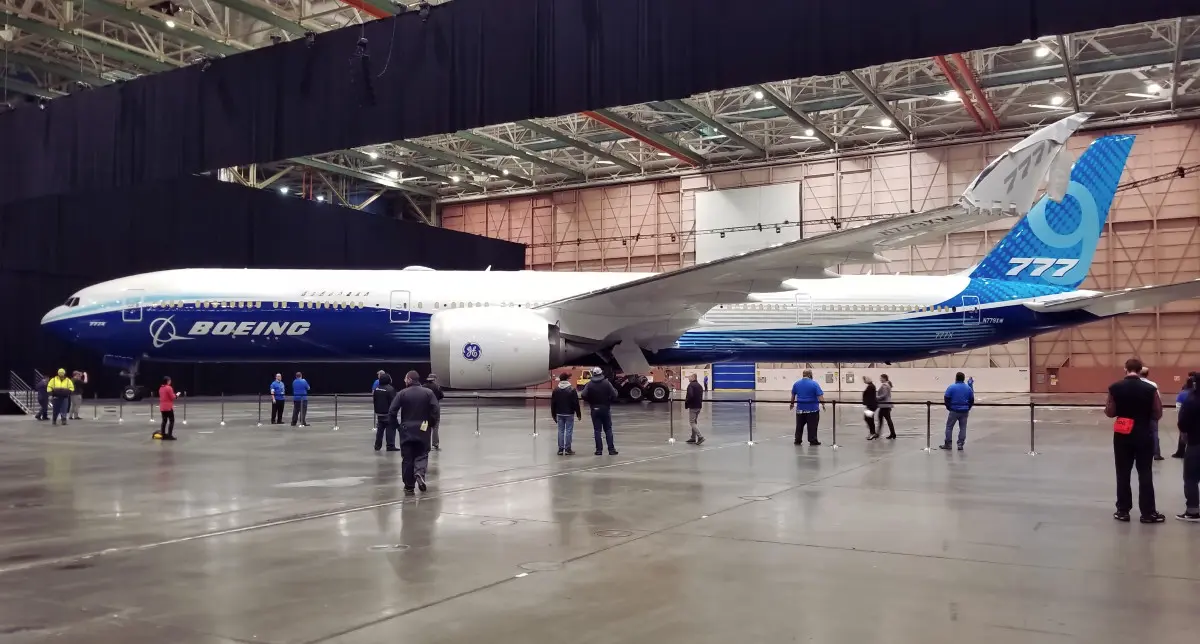
When Did the Boeing 777 Start Flying?
The Boeing 777 started flying commercially in the 1990s and has become an airline favorite for long-distance travel. Read more about when the Boeing 777 flew for the first time, why Boeing developed it and what the future brings for the 777.
Table of Contents
The Boeing 777, commonly called "the Triple Seven", is one of Boeing's best-selling commercial aircraft. A combination of good fuel efficiency, a long range, and excellent passenger capacity has made it a successful bestseller for Boeing. Despite being a modern aircraft, the Boeing 777 was actually conceived in the late 1980s.
Since then, the 777 has enjoyed vast success both as a passenger and freight aircraft, with just over 1000 active planes out of over 1600 produced.
Learn more about when the Boeing 777 started flying, its history, and its future in this post.
When Did the Boeing 777 Start Flying?
After a thorough development phase lasting several years, Boeing's production of the first 777 began in January 1993. Boeing rolled out the first 777 prototype, named WA001, on April 9, 1994.
The first flight of the twin-engine jetliner was on June 12, 1994. Chief Test Pilot John E. Cashman piloted the prototype on its maiden flight. This first flight marked the beginning of an extensive flight test program that lasted for 11 months - more extensive than any previous Boeing model.
After a successful testing phase, the FAA and JAA granted the Boeing 777 its airworthiness certificate on April 19, 1995.
United Airlines received the first of their ordered Boeing 777 on May 15, 1995. This aircraft performed the first Boeing 777 commercial, revenue-generating flight from London Heathrow to Dulles Airport in Dallas on June 7, 1995.
Why Was the Boeing 777 Developed?
The early 1970s saw the first generation of wide-body passenger airliners enter service: The Boeing 747, Lockheed L-1011 TriStar, and the McDonnell Douglas DC-10.
When Airbus introduced its A300 in 1974, it was the first wide-body passenger aircraft with only two engines. Being a twin-engine airliner, the Airbus A300 reduced weight, fuel, and maintenance costs, significantly benefiting airlines. Boeing unveiled the 767 to compete with the Airbus A300 and proposed a 777 model with three engines to compete with the DC-10 and L-1011. Airlines, however, did not favor the proposed 777 trijet, which Boeing later canceled.

This left Boeing with a product line market gap. It offered no aircraft between the 747 and 767 in terms of size and range. But in the late 1980s, the DC-10 and L-1011 were close to retirement age, and airlines needed replacements.
In 1986, Boeing unveiled an enlarged version of the 767 called 767-X to target the replacement market. An enlarged version of the 767 would also complement Boeing's product lineup between the 747 and 767.
But airlines showed very little interest in the proposed Boeing 767-X. They wanted a wider fuselage, a more flexible interior, lower operating costs, and an aircraft equally flexible for both short- and long range.
Failing to attract interest in either a trijet 777 or an enlarged 767, Boeing realized that the only answer to the market situation was a completely new design: The Boeing 777 twinjet.
Boeing began the development of the 777 and consulted with eight airlines for the design, which was unusual for that time. Boeing wanted to ensure its final product would be successful, and indeed, seven of the eight airlines ended up ordering the 777.
What Makes the Boeing 777 Special?
Here are some of the things that make the Boeing 777 a remarkable aircraft:
- First commercial aircraft designed digitally. Boeing designed the 777 exclusively using 3D CAD software, a first for any commercial aircraft. This design approach allowed engineers to virtually "assemble" the 777, do simulations, and review how the thousands of parts fit together. It also eliminated the need for costly physical mock-ups. This approach resulted in reduced workloads, less rework, and lower development costs.
- Large-diameter turbofan engines. The Boeing 777 requires significant power and its engines are the world's most powerful turbofan engines. Initially, Boeing offered three different engine options for the 777. Today Boeing has reduced the engine selection. The Boeing 777 comes with the General Electric GE90. The next-generation Boeing 777X also comes with just one engine option - the General Electric GE9X.
- First Boeing aircraft with fly-by-wire flight controls. With a fly-by-wire system, a computer takes control input from the pilots. The computers then signal the control surfaces (rudder, ailerons, etc.) to move. Conventional systems use mechanical rods, cables, and pulleys, add considerable weight and take up space. The Boeing 777 is the first commercial aircraft to feature a fly-by-wire system.

What Is the Future of the Boeing 777?
In recent years, Boeing has been developing a new model 777, called the 777X. According to Boeing, this model will be the world's largest, most fuel-efficient twin-engine jet.
The Boeing 777X features the new General Electric GE9X. These engines offer higher bypass and compression ratios which increases fuel efficiency by a projected 10%. General Electric developed the GE9X from their GE90 engine.
Another new feature of the Boeing 777X is a new wing made of composite materials. That gives the aircraft better overall performance, fuel efficiency, and increased fuel capacity. The wingtips on the new 777X can fold upwards, which is a first on a commercial aircraft. That allows the 777X to stay within the same size category as the 777.

Boeing estimates up to 13% fuel savings on the 777X compared to the current 777, thanks to the new engines and composites.
Deliveries of the Boeing 777X are set to begin in 2024. It first flew on January 25, 2020.
Conclusion
The Boeing 777 is one of Boeing's most significant commercial successes. It is the first commercial airliner designed entirely using digital tools and is the first Boeing aircraft with fly-by-wire controls. It is a modern airliner, but its history began in the late 1980s.
So when did the 777 start flying? After a development period of several years, the aircraft flew for the first time on June 12, 1994. The first commercial, revenue-generating flight was with United Airlines from London Heathrow to Dulles Airport in Dallas on June 7, 1995.
A changing market and technological advances in the 1970s and 1980s led to the development of the Boeing 777. Increasing competition from Airbus, Lockheed, and McDonell Douglas contributed to the birth of the 777.
The next chapter in the Boeing 777 product line is the 777X. It is a more efficient aircraft and improves fuel consumption by an estimated 13% compared to the 777. With the 777X, the future looks interesting for Boeing and aviation enthusiasts.
Planenerd Newsletter
Join the newsletter to receive the latest updates in your inbox.






